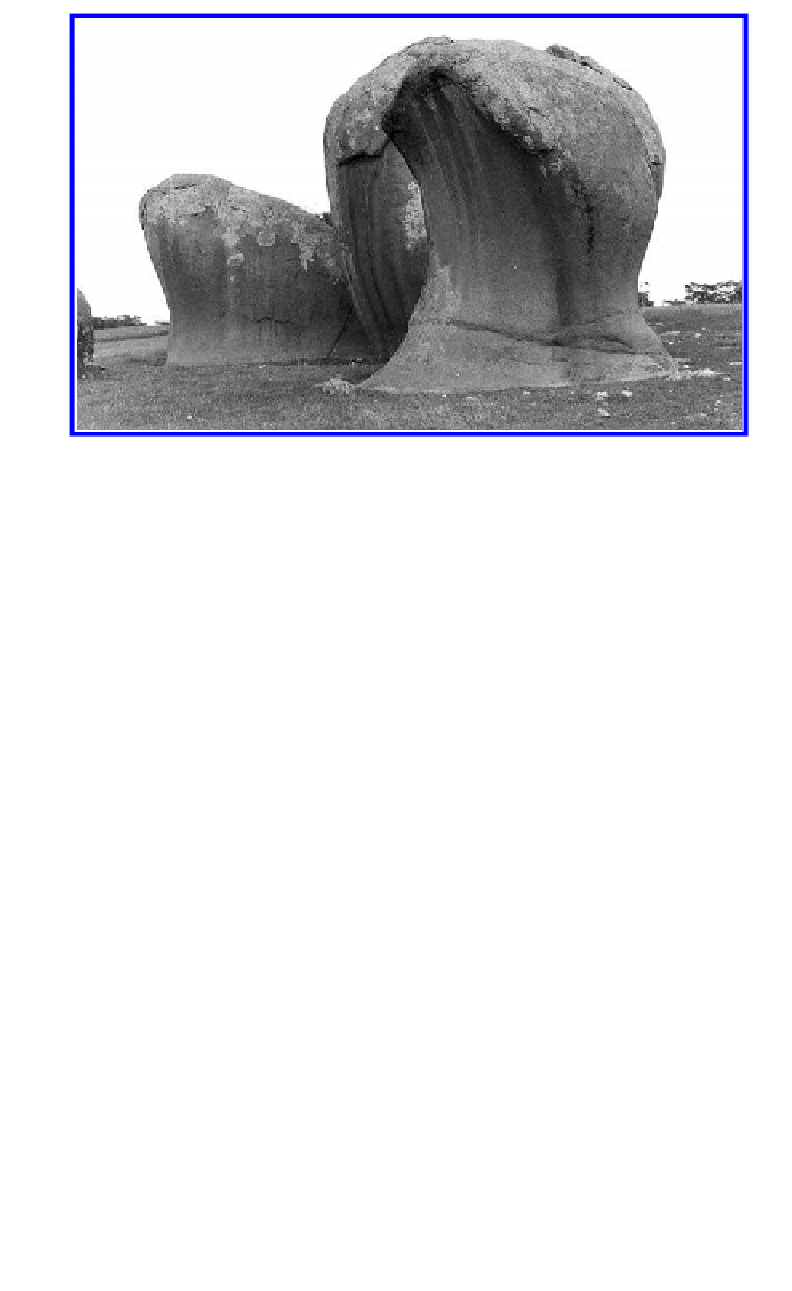Geology Reference
In-Depth Information
(f)
Figure 8.17.
(f) Fluted overhanging backwall of tafoni at Murphys Haystacks, northwestern Eyre Peninsula,
South Australia.
1964 and see Fig. 8.17f; see also Chapter 10). Flutings are well-developed in equatorial areas of con-
sistently high rainfall and were described from Singapore and Malaysia (Hellstrom, 1941) in the
middle of the last century and the Andringitra Massif of Madagascar (Petit, 1971, 1990).
The humid tropical provenance of some of the forms has seemingly been confirmed by several
workers, but in reality they are found far beyond the confines of such regions. They have been
described from such arid and semi-arid areas as central Brazil, and occur also in the arid lands of
southwestern Angola, on Domboshawa in Zimbabwe, on Paarl Mountain near Capetown and the
Vo lzberg, in the savannas of Surinam. They are well-developed at several sites in Victoria and on
Eyre Peninsula, South Australia. They occur in cool, high altitude areas in the highlands of tropi-
cal Brazil. They have been described from recently deglaciated or cold areas such as Scandinavia,
and Bohemia, from seasonally cold areas like the Margeride of central France. Flutings occur on
granite exposures in many parts of the Iberian Peninsula, coastal and interior, glaciated and non-
glaciated. On the other hand, they are strangely lacking in northern Australia; they are not absent,
but they are rare, and then poorly developed.
8.6.2
Origin
That a broad and general control is exerted by structure on the development of flutings was first
indicated when it was pointed out that the forms are developed only on massive rocks. They do not
occur on closely fractured bedrock, save in special circumstances, presumably because the mois-
ture that is most likely responsible for their development can there percolate into the cracks and
crevices, and does not attain the volume or velocity required to scour isotropic rock surfaces.
In Swaziland, on the Mswati Granite, some small grooves are preferentially developed on
microgranite which has numerous grain boundary cracks susceptible to moisture attack. That some
grooves in granite are Kluftkarren (
Fig. 8.18),
being due to the exploitation of fractures by weath-
ering agencies, was recognised long ago. In 1849 Logan suggested that some of the grooves of
Pulau Ubin, in the Johore Strait, may have been developed in linear zones where the granite was
less cohesive than elsewhere. But the control exerted by structure is not absolute. Slope is more
important at most sites. Gutters and grooves on Wudinna Hill and Ucontitchie Hill, northwestern
Eyre Peninsula, South Australia, and in Plateau de Andohariana, Andringitra Massif, Madagascar
(Vidal Romaní, Ramanohison and Rabenandrasana, 1997) follow along joints for short distances,

